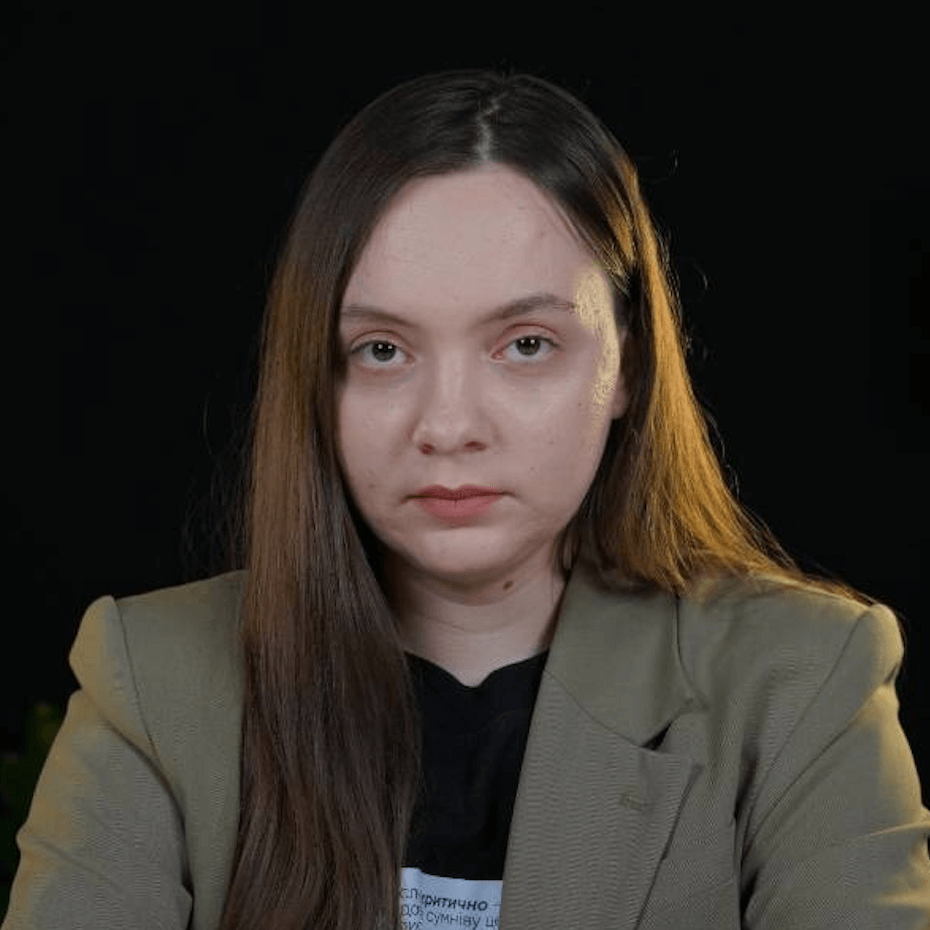The information space of Ukrainians has long become a battlefield against Russian propaganda, which has only intensified in the conditions of a full-scale invasion. Russia systematically pollutes it with lies and manipulation, so it is critically important to be able to distinguish disinformation from other content. VoxCheck, together with the company CBR, conducted a survey to investigate the ability of Ukrainians to identify pro-Russian narratives and factors influencing this ability. As a result, it was possible to identify the topics most sensitive to Russian propaganda and how to counteract them.
With the support of the International Renaissance Foundation, VoxCheck, together with the company CBR, investigated the public’s ability to distinguish Russian propaganda narratives.
A brief overview of the methodology
Target audience: Ukrainians aged 18-70 residing in Ukraine or abroad (Poland, Czech Republic, Germany, United Kingdom, Spain, Italy, France, Slovakia, and others).
Survey dates: May 26 – June 7, 2023.
Survey methods: online interviews on the CBR Point panel, telephone interviews, and online interviews.
Sample: 1,466 respondents from Ukraine and 327 respondents from abroad.
For the sample of Ukrainians in Ukraine, quotas were established based on gender, age, region, and type of settlement, proportional to the population structure (taking into account migration in the context of the full-scale invasion). Quotas for Ukrainians abroad were established based on the country of residence, proportional to the share of refugees in that country, as well as the region where they resided in Ukraine before going abroad.
Respondents evaluated a set of pro-Ukrainian and pro-Russian statements on a 7-point scale, indicating how much they believed each statement corresponded to reality. They also assessed the frequency of encountering corresponding narratives in the information space over the past month.
Research Results
Overall, the majority of respondents, both in Ukraine and abroad, agreed with pro-Ukrainian messages and disagreed with pro-Russian ones. This indicates a general tendency of the population to distinguish Russian propaganda narratives. However, when analyzing each narrative separately, the following concerning signals were noticeable:
- 43% of respondents in Ukraine and 36% abroad disagreed with the statement “Nazi and/or neo-Nazi ideology is not widespread in Ukraine”;
- 29% of respondents in Ukraine and 35% abroad disagreed with the statement “The Revolution of Dignity in Ukraine in 2013-2014 was NOT a coup”;
- 26% of respondents in Ukraine and 29% abroad agreed with the statement “Russia is fighting against the West/NATO in Ukraine”;
- 25% of respondents in Ukraine and 29% abroad agreed with the statement “The West is using Ukraine for its own purposes in the war against Russia”;
- 32% of respondents abroad agreed with the statement “Russian speakers are oppressed in Ukraine”.
Notably, the narrative about the oppression of Russian speakers did not receive significant support from Ukrainians residing in Ukraine. However, it was more readily accepted by respondents abroad. This suggests that the primary target of Russian propaganda in this case is Ukrainians in Europe. Russia seeks to convince foreigners that Russian speakers in Ukraine are being discriminated against in order to tarnish the country’s international image and discredit the Ukrainian government. This is supported by the survey results regarding the frequency of encountering these narratives in the information space: Ukrainians abroad encounter messages regarding the illegitimacy and incompetence of the Ukrainian government and the oppression of Russian speakers much more frequently.
If we delve deeper, the topics of Nazism and Western involvement in the war provoke more controversies among residents of small towns and villages, as well as individuals aged 50-70. Consequently, the opinions of the surveyed Ukrainians depend on their place of residence and income level.
People with low income who are forced to economize on food are more susceptible to accepting pro-Russian claims. 40% of respondents who identified their financial status in this way agreed that the West uses Ukraine for its own purposes in the war with Russia. Furthermore, when asked “How confident are you in your ability to distinguish disinformation from the truth?”, they were less confident compared to other groups. On the other hand, those who consider their income level to be high (sufficient for food, clothing, footwear, and expensive purchases) were, in fact, one of the most confident groups in their critical thinking abilities.
Geographically, agreement with pro-Russian messages is most prevalent in the South and East regions. Residents of the South, more than others, acknowledged the prohibition of the Ukrainian Orthodox Church of the Moscow Patriarchate as persecution of the church and its believers, and they agreed with the statement that the West uses Ukraine for its own purposes in the war with Russia.
Residents of the East are more prone to believe Russian propaganda regarding the development of bioweapons, the deliberate destruction of cities in Donetsk and Luhansk regions by Ukraine, and the “fraternity” between the Ukrainian and Russian nations.
Additionally, residents of the South and East more frequently affirmed the influence of NATO provocations on Russian aggression. Conversely, pro-Ukrainian messages receive less support from residents of the southern and eastern regions. This refers to the statements regarding the illegality of Russian referendums, benefits from weapon supplies, recognition of the mass killings in Bucha as war crimes committed by the Russian army, and the fight against collaborators in politics and the media.
Moreover, the inclination to accept pro-Russian statements is also observed among residents of major cities in the South and East, such as Odesa, Kharkiv, Dnipro, and Kryvyi Rih.
The overall response pattern of residents in both large and small cities is similar. Regardless of the region, pro-Ukrainian messages regarding the recognition of Russians’ guilt in the mass killings in Bucha and support for Ukraine’s victory through arms supply received almost unanimous support from the population. High levels of agreement were also noted regarding the falsification of referendums and the banning of pro-Russian parties. However, residents of small towns and villages less frequently acknowledged the effectiveness of Western sanctions and the limited prevalence of Nazi ideology in Ukraine. At the same time, they showed greater support for pro-Russian narratives regarding the West, and NATO, and holding the Ukrainian government responsible for the humanitarian crisis.
Particular attention is required for the message that “The Revolution of Dignity in Ukraine in 2013-2014 was NOT a state coup“. It belongs to a set of narratives that have been consistently present in the Ukrainian information space over the past nine years. Therefore, trends can be observed not only in terms of regional distribution but also in terms of age and education. Unlike other messages, this narrative received varying levels of support from men and women. Women have more doubts about the description of the events of 2013-2014 and less frequently agreed with this statement. The same trend was shown by the youth: 37% of respondents aged 18 to 29 believe that the Revolution of Dignity was a state coup. This indicates the need for continued communication with society regarding these events, and educational initiatives, particularly concerning terminologies.
The ability to distinguish disinformation is also influenced by sources of information consumption and self-assessment of critical thinking skills.
Respondents who follow foreign media (television, analytical publications) and avoid Ukrainian ones are more prone to agreeing with pro-Russian statements. Ukrainian news and analytical publications, as well as Ukrainian television, are mostly mentioned as the main sources of information by Ukrainians. Ukrainians living abroad are more inclined to listen to “independent experts”, friends, acquaintances, and foreign media.
The analysis of the presence of pro-Ukrainian and pro-Russian narratives in the information space has shown that approximately 20% of Ukrainians regularly encounter messages of hostile propaganda. It is the residents of the South who encounter pro-Russian narratives most frequently. Additionally, there is an observable connection between the region’s specificity and the dominant pro-Russian messages within it. In the Western regions, there is a higher prevalence of the narrative that the ban on the Ukrainian Orthodox Church of the Moscow Patriarchate (UOC-MP) is the persecution of the church and its believers, while in the Eastern regions, there is a narrative emphasizing the fraternal relationship between Ukrainians and Russians.
According to their own assessments, 97% of Ukrainians are familiar with and understand the term “disinformation” or have at least heard of it. Confidence in the ability to distinguish disinformation has a positive impact on the level of support for pro-Ukrainian claims. Those less confident in their ability to discern disinformation include:
- women, especially young women aged 18-29;
- men aged 50-70;
- residents of villages;
- individuals with secondary and vocational-technical education;
- those who rely more on Ukrainian television or information from friends and acquaintances. Specifically, people aged 50-70 rely more on Ukrainian television as a source of information, while young people aged 18-29 rely more on information from friends and acquaintances.
These specific groups require closer attention when planning information campaigns and educational initiatives. According to the results, women often receive information from Ukrainian online publications. Older people also trust Ukrainian publications and follow the “Єдиний телемарафон” (Unified Telethon). In rural areas, in addition to publications and the telethon, radio is still a relatively common source of information. This should be taken into account when planning campaigns to counter disinformation.
Conclusions
The conducted survey revealed the overall ability of Ukrainians to differentiate narratives of Russian propaganda. Interestingly, they are better at identifying and more consistently aligning with pro-Ukrainian claims when it comes to new messages that have emerged during the full-scale invasion. On the other hand, the narratives about Nazism and a state coup, which are already “rooted” in the Ukrainian information space, had the widest range of responses. It is likely that active communication from the government and civil organizations regarding hostile disinformation played a role in the case of new disinformation attempts. The sustained popularity of “evergreen” narratives may be attributed to the lack of timely response to disinformation and the presence of “information noise” with a multitude of versions (a favored strategy of Russian propagandists with their “not everything is so straightforward” approach). In this case, the active promotion of counter-narratives is necessary.
In the previous version of the article in the thesis “Nazi and/or neo-Nazi ideology is not widespread in Ukraine” an error was made when translating the article from Ukrainian. Readers drew our attention to this, so in the updated version of the article we corrected the wording of the thesis to the correct one.
Attention
The author doesn`t work for, consult to, own shares in or receive funding from any company or organization that would benefit from this article, and have no relevant affiliations








